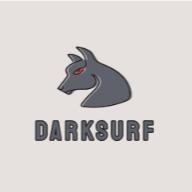DarkSurf
"First Identify, then rectify"
The problem DarkSurf solves
DarkSurf DarkWeb Crawler helps defense organizations tackle key cybersecurity challenges:
-
Monitoring Threats: It keeps an eye on the dark web, spotting potential attacks before they escalate.
-
Identifying Harmful Content: It swiftly detects and categorizes hate speech and extremist material, aiding in online safety efforts.
-
Gathering Intelligence: By exploring hidden networks, it provides valuable insights into cybercrime and terrorism, enhancing preparedness.
-
Ensuring Security: DarkSurf shields operations and personnel by employing advanced anonymity techniques.
-
Efficient Analysis: Its streamlined approach allows for quick data processing, enabling real-time threat response.
In summary, DarkSurf equips defense organizations with the tools they need to stay ahead of evolving threats and protect against cyber and physical security risks effectively.
Challenges we ran into
During the development of DarkSurf DarkWeb Crawler, we encountered several challenges:
-
Concurrency Issues: Managing concurrent web crawling processes while ensuring efficient resource utilization was a significant challenge. We addressed this by carefully designing our asynchronous architecture using asyncio and aiohttp, allowing for seamless concurrent crawling of multiple websites.
-
NLP Model Integration: Integrating the NLP model for hate speech classification posed a challenge due to compatibility issues and resource constraints. We overcame this hurdle by carefully selecting a pre-trained model compatible with our system and optimizing its usage to minimize computational overhead.
-
Anonymity and Security: Ensuring the anonymity and security of our crawling activities presented a constant challenge, as any slip-up could compromise the integrity of our operations. We mitigated this risk by implementing robust security measures such as random user agents and secure random strings, coupled with regular security audits and updates.
-
Scalability: As the project progressed, we faced challenges related to scalability, particularly in handling large volumes of data and optimizing performance. To address this, we continuously optimized our codebase and infrastructure, leveraging efficient data storage techniques and parallel processing wherever possible.
-
Dark Web Network Stability: The inherent instability and unpredictability of the dark web networks, such as Tor and I2P, occasionally disrupted our crawling activities. To overcome this challenge, we implemented robust error handling mechanisms and introduced retry strategies to handle network timeouts and connectivity issues gracefully.
Despite these challenges, our team's perseverance, collaboration, and problem-solving skills enabled us to overcome obstacles and deliver a robust and effective solution in DarkSurf DarkWeb Crawler.
Technologies used
